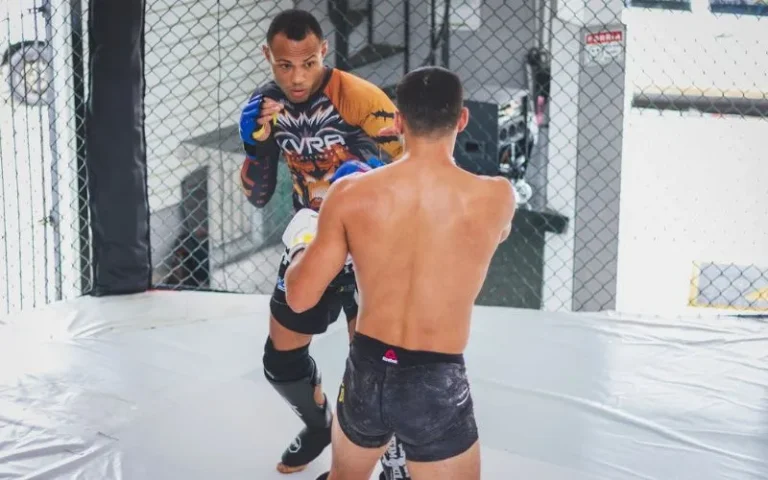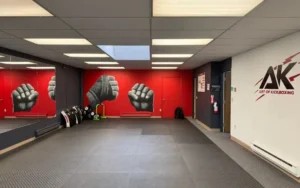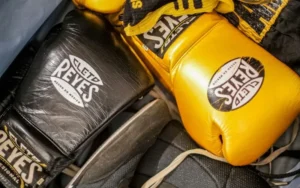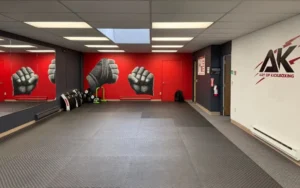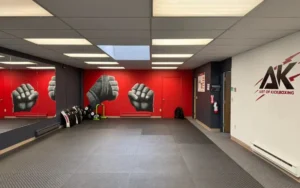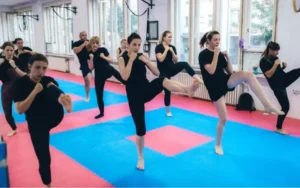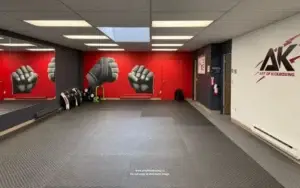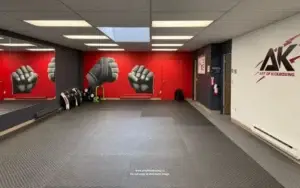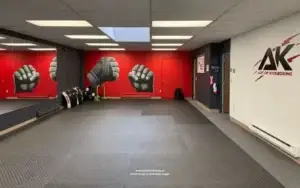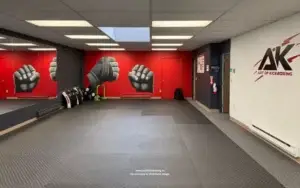Mixed Martial Arts (MMA) has evolved into the fastest-growing sport in the world, captivating millions with its blend of martial arts disciplines and showcasing the skills of the most versatile combat athletes. Whether you’re drawn to the sport by the prowess of fighters like Conor McGregor, the legacy of legends like Bruce Lee, or the strategic mastery of competitors such as Khabib Nurmagomedov, starting your journey into MMA can seem daunting at first.
However, with the right approach, dedication, and guidance, anyone can embark on the path to becoming a well-rounded fighter in this dynamic combat sport.
- Specialization Before Expansion: Starting with a specialization provides a solid foundation for combat sports, critical before expanding your skills to include all three aspects of MMA: range control, striking, and effective ground game techniques.
- Physical Fitness and Sparring: Maintaining peak physical condition through strength, cardio, and flexibility training, combined with sparring sessions, is essential for preparing for the intensity of MMA fights.
- Learning from Experienced Fighters Accelerates Growth: Studying and analyzing the techniques and strategies of successful fighters, coupled with real-world competition experience, is invaluable for aspiring MMA athletes aiming for professional careers.
How to Get into Mixed Martial Arts (MMA) In 5 Steps
A career in Mixed Martial Arts (MMA) requires strategic training and focused dedication. Key steps include engaging in specialized training sessions with a reliable training partner and analyzing tactics of favourite fighters to enhance one’s understanding of combat strategies.
It’s important to adapt to various weight classes and skill levels while ensuring safety through appropriate protective gear. A well-rounded regimen encompasses diet plans tailored to support the physical demands of MMA, alongside an advanced training program that includes a mix of striking and grappling techniques.
This approach, designed for both amateur fighters and those specializing in Brazilian Jiu-Jitsu, aims to cultivate a personal style through comprehensive preparation, underscored by the importance of a safe training environment.
RELATED: Children’s Martial Arts: What to Choose
1. Choose Your Specialization Classes
The first step in your MMA journey is to choose a specialization. While MMA encompasses a wide range of martial arts, beginning with classes that focus on one discipline can provide a solid foundation.
Popular starting points include striking styles like kickboxing, Muay Thai, or traditional martial arts such as karate and taekwondo for range techniques.
Additionally, grappling arts like Brazilian Jiu-Jitsu, wrestling, and judo are essential for developing a comprehensive ground game.
2. Build a Solid Foundation: Ground & Striking Skills
A solid foundation in a primary martial art is crucial for developing your fighting style and combat style. For instance, Brazilian Jiu-Jitsu (BJJ) offers a strategic advantage in ground fighting and submission techniques, making it a popular choice among successful fighters. Similarly, kickboxing or Muay Thai can develop powerful striking skills and stand-up fighting abilities, essential for controlling the pace and distance in a fight.
Once you’ve established a base in your chosen specialization, expanding your skills to include other martial arts is vital. A well-rounded fighter is proficient in both stand-up fighting and ground game, capable of transitioning seamlessly between striking and grappling.
This means adding disciplines that complement your primary skill set—such as Jiu Jitsu for a striker or Muay Thai for a grappler—to enhance versatility.
An MMA fighter that doesn’t have range control, striking skill, and ground game, will not succeed in the top competitions of the MMA world.
RELATED: 3 Best Martial Arts for Self Defence in Vancouver
3. Work On Your Physical Fitness: Training, and Sparring
Physical training and maintaining peak physical fitness are non-negotiable in MMA. This includes strength training, cardio, core exercises, and flexibility workouts tailored to the demands of the sport.
A comprehensive training program also involves technical sparring, grappling-based sparring, and conditioning to prepare for the intensity of actual MMA fights.
Training with a partner or joining an MMA fight team can provide valuable experience and feedback, helping you refine your techniques and fighting skills.
4. Learn and Analyze the Best Fighters
Studying your favourite fighters and training under experienced coaches can accelerate your growth as a martial artist.
Some recommended fighters to study include Yodsanklai Fairtex (Muay Thai), Alex Pereira (Kickboxing), and Khabib Nurmagomedov (BJJ & Wrestling).
Analyzing fights, attending seminars, and participating in martial arts classes led by experienced fighters offer insights into advanced techniques and strategies.
Moreover, joining competitions, from amateur fights to jiu-jitsu competitions and kickboxing competitions, can provide invaluable real-world experience.
RELATED: Is Kickboxing a Martial Art? Yes! Here’s Why
5. Apply to Competitions to make it to the UFC or ONE Championship
Aspiring to compete in top organizations like the UFC or ONE Championship requires a combination of talent, hard work, and strategic career management.
Successful fighters often start with amateur boxing or MMA competitions to build a record and gain visibility. Winning amateur fights and championships while showcasing a compelling fighting style can attract the attention of scouts and promoters.
Networking with other fighters, coaches, and industry insiders is also crucial for finding opportunities to showcase your skills on a larger platform.
Disclaimer: Be aware of the risks before deciding to apply to competitions. Injuries in martial arts competitions can result in life-changing injuries or even be fatal. MMA is not a safe sport, and is not a good option for overcoming major career setbacks due to the lack of financial profitability of MMA competitions. (Art of Kickboxing does not advocate that people apply for competitions. That is the individual choice of the martial art practitioner.)
MMA Gear and Equipment
The right gear is essential for safe and effective training, down the line it may be beneficial to invest in the best equipment. Basic gear includes boxing gloves, shin guards, a mouth guard, and protective headgear for sparring sessions. As you progress, specialized gear tailored to your training needs—such as grappling gloves for BJJ or headgear for striking practice—becomes important.
MMA Diet and Mental Fortitude
A healthy diet rich in nutrients supports physical training and recovery, while mental toughness and mental fortitude are just as important as physical preparation. Developing resilience, focus, and a competitive mindset is essential for overcoming challenges inside and outside the cage.
RELATED: Are Kickboxing Classes Worth It?
Start Your Career as a Professional MMA Fighter
Becoming a professional fighter in MMA is a journey that requires dedication, versatility, and continuous improvement. From choosing your initial martial arts focus to expanding your skill set and competing in amateur competitions, every step is a building block towards becoming a competitive fighter in organizations like the UFC or ONE Championship. With the right training regimen, a commitment to physical and mental preparation, and a passion for the sport, aspiring MMA fighters can achieve their dreams of stepping into the cage as a professional athlete.
Entering the world of MMA is a challenging but rewarding endeavour. By focusing on developing a well-rounded skill set, maintaining peak physical condition, and learning from experienced fighters and coaches, anyone with dedication and perseverance can make a mark in the world of mixed martial arts. Remember, every successful fighter started somewhere, and with the right approach, you too can embark on this exciting journey.

